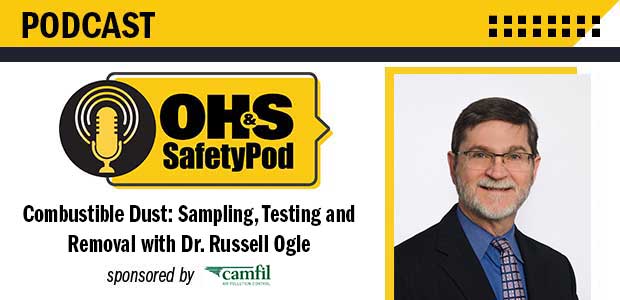
Although food delivery during the pandemic has been a saving grace for restaurants, it presents health and safety challenges that need to be addressed.
Former United Steelworkers safety official Jim Frederick will act as OSHA’s Deputy Assistant Secretary of Labor.

Big meatpacking companies like Tyson and JBS are working to get their employees vaccination quickly to avoid more coronavirus cases in meatpacking facilities.
Health and safety companies have developed unique solutions to assist organizations in their desire to overcome the challenges presented by COVID-19.

President-elect Joe Biden will push for an OSHA standard to protect workers from COVID-19.
Employers covered by the injury and illness recordkeeping provisions of Part 1904 must create and maintain a 300 Log for each establishment. Understanding how OSHA defines an “establishment” is critical to complying with those requirements.
The Job Hazard Analysis process focuses on job tasks to identify hazards before they occur.
The COVID-19 pandemic is changing the way we do business in this country. Workers who are able to are now working from home, and workers who are in construction or manufacturing are practicing social distancing on the job. Healthcare workers, social workers, and others who have contact with the public must take extra precautions to protect themselves from exposures to the coronavirus.

Episode 50
Editor Sydny Shepard and Dr. Russell Ogle get into the nitty gritty of understanding the kinds of dust present in your facility.
2020 highlighted how much health and safety oversight there was in the industry, emphasizing the need for better insights.

Gov. Tom Wolf’s PAsmart Next Generation Industry Partnership will supply 28 Pennsylvania businesses with grants to train their workers.

Episode 49
In this episode, Editor Sydny Shepard discusses anticipated changes safety professionals should look out for after the inauguration of President-Elect Joe Biden on January 20, 2021.

The adjustments to the civil penalty amounts take effect on Jan. 15.
Establishments that have more than 20 employees and high injury and illness rates are the targets for this program.

Starting Jan. 26, all incoming United States passengers must provide a negative COVID-19 test.
Ultimately, to be successful in this effort, several best practices should be integrated into every cleaning program for optimal results.
In addition to paying the fine, the Baltimore Gas and Electric company will upgrade their gas lines to prevent other explosions from occurring.